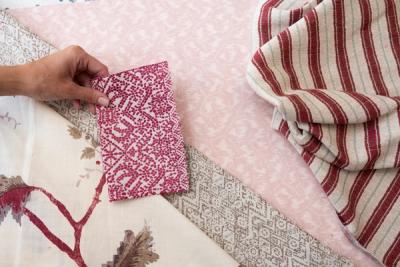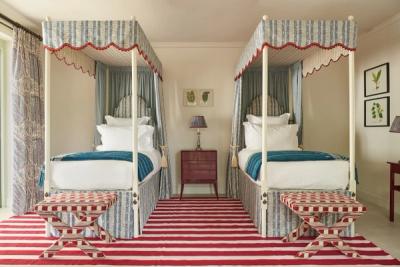Decoration
5 Unusual (But Effective) Ways to Use Printed Wallpaper

5 Unusual (But Effective) Ways to Use Printed Wallpaper
Wallpaper doesn’t need to be a straightforward design feature. Here are some of the more unique ways people are using it these days…
1. On the ceiling
Occasionally referred to has the often overlooked ‘fifth wall’ of the room, the ceiling holds a lot more creative power than many of us give it credit for. The old rules that dictate ceilings should only ever be painted in light, neutral colours went out the window long ago and, with it, any restrictions on where the wallpaper needs to end.
Simply knowing that the ceiling is fair game for wallpaper opens up your options significantly. You can choose to install the paper all the way from your skirting boards, up the walls, and across the ceiling – or, alternatively, you can flip tradition on its head and keep your walls plain, papering just the ceiling instead. Play with the depth of the room with these styles, but, also, the tone too – balancing heavy patterns or darker tones with complementary furnishings.
If you’re looking for a little more inspiration, take a look at our guide to using wallpaper in the bedroom for a dreamy, escapist space.
2. Within a frame
Wallpaper usually requires some sort of boundary. While a small amount on the chimney breast looks effective, a random stripe of wallpaper on a flush part of the wall just wouldn’t look right. Similarly, most of us wouldn’t consider pasting wallpaper only halfway up the wall unless there was a dado rail there to create that boundary. Again, it would just look wrong, somehow.
A much less traditional alternative to the full wall/half wall debate is to enclose an area of wallpaper within a frame. This gives you much, much more versatility in terms of size and shape, and makes it easier for you to wallpaper a part of a larger wall, without that placement looking random and arbitrary.
Square, rectangular, oval, round, framing your wallpaper is a great way to go against the grain while still showcasing the beauty of the paper you choose.
3. Behind shelving
If you’re looking to make a big feature of your wallpaper, then we’d recommend sticking to an emptier wall, since built-in shelving doesn’t offer much visibility – but, if you just want to focus on adding those extra details and finishing touches to a room, then this option is ideal.
Of course, how effective this proves will depend on the size of the print you choose to paper the wall with, since very large prints may be too obscured by the shelves. Choose a pattern small enough that it will repeat several times in the gap between each shelf, like our Pasha Sprig wallpaper. Equally, what you place on the shelving offers potential obstruction, which can have differing impacts: a left-to-right book collection will be overwhelming but a carefully arranged few – positioned between subtle bookends – allows the wallpaper to breathe.
4. On the stair risers
Staircases are rarely treated to quite the same level of attention from us as other parts of the home. In some ways, this is perfectly understandable, since it’s not like you can dress-up a staircase with furniture or decorative lighting – but, even so, the stairs don’t need to represent a means to an end.
While the classic option for the stairs is the runner, plain wood is a great alternative, and it can be paired with a wallpaper (or multiple different wallpapers) of your choice, pasted onto the risers.
This will prevent the wallpaper from seeing too much wear and tear, since it won’t actually be walked on, and mean that, from the ground below, you’ll catch a great view of those colours and patterns.
5. As a backsplash
Of all the items on this list, this one will – at first glance – sound the strangest. It will also sound the most counterintuitive, since a beautiful wallpaper is apt to be ruined pretty quickly by the steam, splashes, heat, and grease that any kitchen backsplash is (usually) designed to cope with.
And yet, there are people applying wallpaper to the spaces above their stoves and sinks.
There is, however, an effective (and chic) alternative to replacing that paper every few weeks, however. Increasingly, we’re seeing interior designers protect their backsplash wallpaper under a panel of clear glass. The screws holding it in place can usually be concealed under any wall cupboards or shelving you might have, creating a sense of the glass ‘floating’ in place – and, as you can imagine, the glass is much easier to wipe clean.
More from Decoration















